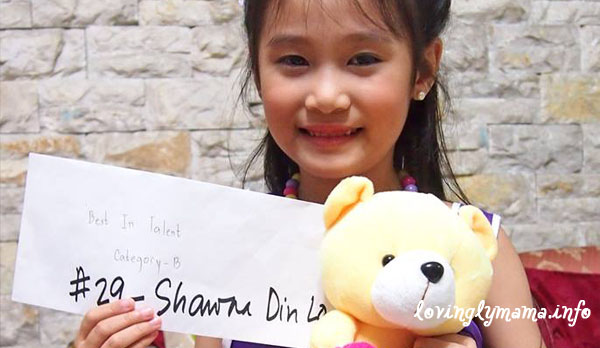My husband and I look at our kids as sponges that easily absorb anything we model or teach them. One important lesson that we would like to impart to them is financial literacy for kids.

Financial Literacy for Kids and Homeschooling
My husband and I feel the need to incorporate financial literacy as we homeschool our children in Bacolod. It is not a regular subject but a way of life, injecting lessons here and there that we hope will guide them in their future choices.
So as parents, I think that it is it is our primary role to lay the ground work of financial literacy to our children.
~Mommy Sigrid
That is because past experiences have shown us that learning about money management mostly came from books, magazine articles, seminars, and parental counselling. The subject is not taught in school and not really modeled at home.
We are taught that finishing a good degree will help us earn bigger incomes for the future. But we are not taught how to properly handle our incomes. We think that both goals should be taught because no matter how big your earning is, you can still end up broke without good management.
Early Financial Concepts
In our home, we have made it a point to introduce our children to financial concepts according to the levels that our kids can comprehend them. Here are the ways we taught financial literacy at home. We may not be perfect and I think that we can still do more, so we keep on researching ways to do it.
Our keyword in this journey is PRUDENCE. We are not wealthy, but I think we are quite prudent with what we have.
The concept of money
Well primarily, kids need to know about the existence of money. Food and clothes do not just magically appear in our cupboards and closets. We buy them using money. In the same way, education does not just happen – it is paid for with money.
And kids need to understand where money comes from.

One of the things that have helped us teach financial literacy to our kids is an animated series on YouTube. In short videos, the concepts of where does money come from, how it circulates, how it gets used up, etc., are taught in an interesting way. We also tell the kids that our money comes from earnings from work and business.
Coin banks and savings
We often get coin banks from birthday parties—use them to teach kids to save up money. Encourage them not to take out coins until the coin bank is full. When you open it, make it ceremonial and involve them in counting the money that they have saved.
Praise them for being good savers. If you don’t get coin banks for free, use cans or soda bottles. Buying new ones from the store is not really prudent.
Play money
Play money has given our kids valuable lessons in trading. We have a toy cash register that we use to buy imaginary stuff, that way they are aware of the exchanging of currencies as we buy merchandise.

Paper bills
Aside from coins, the kids were exposed to paper bills at an early age because of the money gifts that they receive. It is actually pretty basic, but we do tell them that these money bills have more value than coins.
And we have to save more of them than the coins. Even our youngest daughter when she was just more than a year old knows the difference between these paper bills and play money. She knows what real money is like.
Investments
We throw the word “investment” around like it’s a pancake or chocolate. The kids may not necessarily understand the full concept of the word investment, but at least, they are already conscious about it. I started bringing our eldest at 4 years old whenever I topped up on our mutual funds.
I would tell Dindin that we “invest” our money so that it will “grow”. They know that the mutual funds are for their college education. We tell them that investing is better than merely putting their money in the coin banks because investments make their money earn.
So their money doesn’t just end at the coin banks–they go somewhere and not just the store. Simple concepts like these will eventually reap results. In my case, I only heard about the word investment when I was already working.
Making choices
We do not just save and save. That’s not reality. In real life, we know that we have to make choices. We have to buy things. So for example, our kids get money gifts. We tell them how much they have and we encourage them to save most and to set aside a certain amount in order to buy something that they would like. We give them a budget and they stick to it.
Last Christmas, the little one was not able to buy anything because we offered her P200 to spend and she asked for a “red car and a blue tricycle.” Real ones, not toys. So we ended up not buying anything at all because she could not afford what she wants. Additionally, we guide them on what to buy, like things of value as opposed to things that only give temporal pleasures.
Needs vs. wants
Our kids are not very demanding when we go out. I know that there are other kids who would throw a fit if not given what they want at the toy store and such. But there are really times when they would ask for something that they like.
In appropriate instances, we explain why we buy certain things because they are needs as opposed to some things because they are just wants. Needs are non-negotiable and wants can be done without, especially if they do not fit our budget.
“We don’t have money.”
My husband and I have made it a rule not to say “We don’t have money” as a reason not to buy something that our kids want. It is not very healthy and will leave a negative impression on the kids. They will feel deprived and when they get to have money, it is likely that they will splurge on their wants. Instead, we let them understand.
If you are really short on cash, you can honestly tell them that your money is intended to be spent on your needs, like grocery, electric bills, their school dues, and such. It’s better than just telling them flatly that you don’t have money. Technically, that may not be true.
Saving for what you want
So we have another kind of savings–the savings for what we want to have or happen. It could be travel, a new gadget, and such. While the popular concept nowadays is You Live Only Once (YOLO), this may not exactly be good for our financial health. It has been established as a fact that many young ones now invest on experiences. While that is a nice thing and we also do that, we also have to balance it otherwise, we would tend to overdo the “experiencing” part.
When our eldest Dindin was younger, we have decided to bring her to international destinations as part of her learning. But we said we will do it when she is already older and able to understand our travels because after all, the goal is for education. We thought that we would first bring her to Hong Kong in order to visit Disneyland.

At 3 years old, we started her on her travel fund savings. When we opened her coin banks the first time, we then opened a kiddie savings account in the bank for her so that we can deposit the bills that she has saved. She would go with her Papa to the bank to deposit her money.
Plan Stalled
But then our little one came along when Dindin was four. So now, we got the two of them saving up for their Hong Kong trip. We are doing this in order to let them know that as a practice, travelling should be done when you have enough money for it.
We want to impart to them that they have to save up for their travel and not loan any amount for this purpose. There is much more gratification in that.
In spite of travel loans offered by banks and credit card companies, it is our desire that our children will see the value of saving up for their trips.
Our money and their money
For some parents, they do not delineate the kids’ money and their money. For example, a child may save up his allowance for something, either to deposit or to buy something. Then the mom “borrows” the savings in order to pay up for something and then eventually forgets to return that money to or deliberately ignores to pay the child.
While technically, it is the parents’ money in the first place, we have already entrusted it to our children. We have “given” it to them. How will they learn how to manage their money or how will they be encouraged to save if we “harvest” their savings and don’t pay them back? A loan is a loan and should be paid back.

And it’s a bad practice, too, as it is like telling kids that it’s okay to skip on your debts. This also applies to the money gifts they receive. In our case, we save up their money gifts for their future funds. And now that they have a travel fund, we let them decide how much we put in for their investments and how much for travel fund.
Conclusion
These are some of the basic financial literacy for kids concepts that we teach at home. I will make this into a series and will write more about our money practices as they grow older.


Great tips you’ve got. Yeah, the proper financial literary are not taught thoroughly in school, and it is good that parents should be the one to teach the kids about it.
I also learned my first financial literary from my parents. They taught us some busines ideas that we can do why in school. And also thr most important part is, they taught us not to talk about money in public.
hahahah I am imagining people posting their wads of cash on Facebook. LOL
Awesome advices. We also don’t say “We don’t have money.” Instead we say..”We don’t have cash we can spend right now.” Kids know that we allocate budget for investments and travels. They also know how to invest and let money earn while traveling.
True that. Great traveling you guys! 😀
These are very valuable lessons for our children! I learned as well, it’s never too late! Haha! I wish someone was there to teach me financial literacy as well, apart from the value of money and how it looks like, its denominations and the like, I never learned how to save for a rainy day. I only learned about it when I was a mom myself, shame, I know!
I was never taught how to manage money as a kid, so now, I have so much trouble managing our finances, it’s a good thing my husband is around to guide me. 🙂
That’s okay sis, there’s always a start. You work together with your husband. You will make a great team. 😀
I think you’re doing a great job teaching your kids about money. I agree, a lot of these things are not taught in school at all. It’s best for kids to learn and understand these lessons when it is part of their daily lives.
Those are great tips to teach kids about money. I also don’t say “we don’t have money to our kids” I say we don’t have a budget for that.
True sis. Great choice of words! 😀
I seriously have failed in this department. My kids have no sense of money. 🙁 We never gave them ‘baon’ growing up so now that one is 16 and the other is 14, they have no idea where to spent the money they get….I hope it’s not too late to start…kalurks…
Yeah..great Tips for kids … this is a great idea for homeschooling.kids..we get to.teach all these extra learnings to.them..
This is so important!
Such a nice tips & great idea!